[Philharmonic pressure Cooking course] Philharmonic pressure Cooking parameters and techniques to explain the course (with video)
For professional baristas, please follow the coffee workshop (Wechat official account cafe_style)
The operation method of Philharmonic pressure is changeable, there are no absolute rules, play your imagination, you can make a good cup of coffee. Use it as much as you want. It is precisely because of the changeable way of playing AeroPress, its maneuverability and the controllability of coffee extraction factors that there is now the World Philharmonic pressure Competition (World Aeropress Championships).
Today, let's talk about the cooking of Philharmonic pressure.
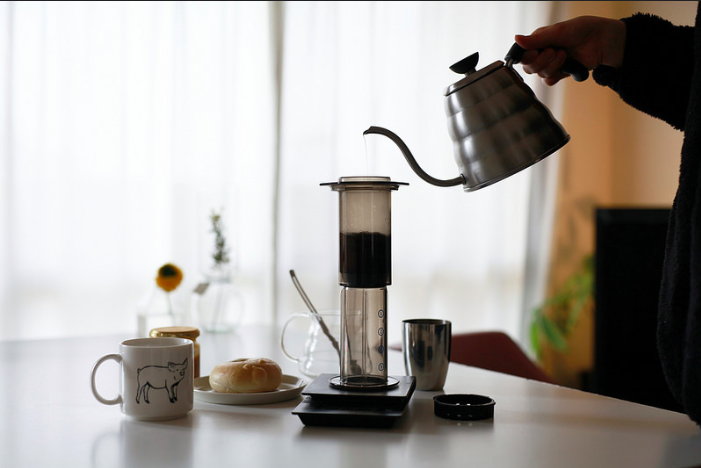
The origin of Philharmonic pressure
Inventor: Alan Adler, the boss of Aerobie, a game Frisbee company that makes the Frisbee, holds the record for the farthest projectile that can fly! Alan himself is a dedicated inventor with more than 40 patents and has taught at Stanford University, Princeton University, California Institute of Technology. Wait.

On the surface, it seems that there is no connection with coffee, but this scientist, because there is no coffee appliance he wants to use on the market, so he started to study the extraction principle of coffee, and finally created his own coffee appliance in 2005-AeroPress.
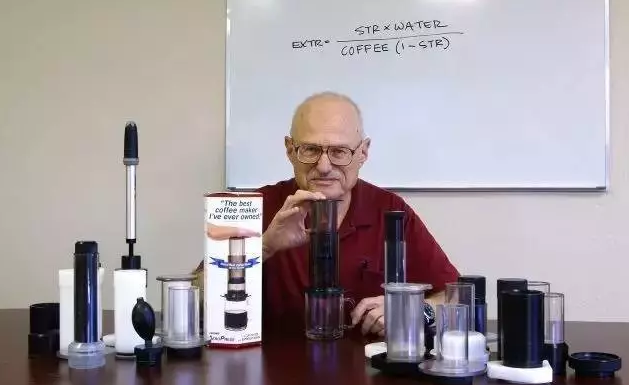
Standard accessories for Philharmonic pressure
Philharmonic pressure standard accessories:
Philharmonic pressure body (rubber head has been installed)
a hopper
Filter paper receiver
Filter cover
Filter paper
Measuring spoon
Stirring rod
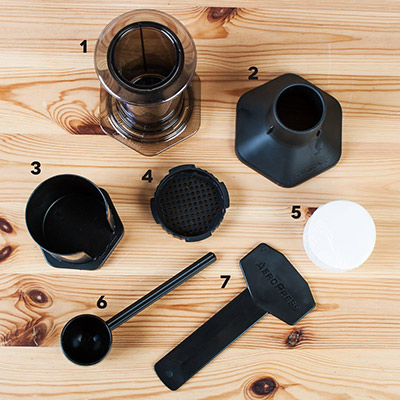
The extraction principle of Philharmonic pressure
In fact, Philharmonic pressure is not only a creative product with great ingenuity, but also a practical product. It combines the immersion extraction method of French filter pressure pot, the filter paper filtration of hand-brewed coffee, and the rapid and pressurized extraction principle of Italian coffee. So in theory, the coffee brewed by the Philharmonic can have both the richness of espresso, the purity of hand-brewed coffee, and the smoothness of a French kettle.

The Flavor characteristics of Philharmonic Coffee
Clean and smooth taste: the Philharmonic filter paper has a high density, and the filtered coffee is very clean. With the right warm water and proper pressure, you can brew coffee with low acidity and no bitterness, but full flavor.
Rich flavor: complete immersion can maximize and evenly extract coffee, keeping the flavor of coffee intact.
Rich alcohol thickness: 1 minute to make a perfect cup of coffee, the actual filtration time is only 20 seconds. However, because of the pressurized extraction in the pressing process, the alcohol thickness is thicker than that of other soaked coffee.
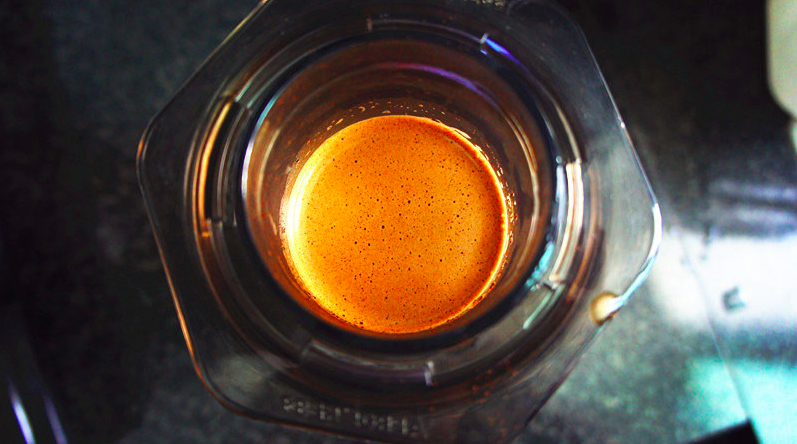
Positive Pressure and Counter Pressure of Philharmonic Pressure
[positive pressure]
Positive pressure is…positive pressure, official standard tutorial practice.
As shown below, put the brewing part of the Philharmonic pressure on the cup, add powder, heat water, stir, and press down when the time is up.

[reverse pressure]
Reverse pressure is to assemble the whole brewing part with the piston and put it upside down. Then add powder, hot water, stir evenly, the time is up to cover the lid with filter paper, then put it upside down on the cup, and press it out.

The difference between positive pressure and back pressure
The taste is mainly related to the control of the above variables, the only difference is that with positive pressure, coffee will be filtered out at the same time, which will affect the integrity of the taste, and reverse pressure can avoid this problem. This is also the reason why more people prefer reverse pressure.
Cooking parameters of Philharmonic pressure
If you think I will give you a standard cooking parameter of Philharmonic pressure, then you may be disappointed. In fact, the "playability" of Philharmonic pressure is not lost at all, and the reason why relatively few people play is not because it is too expensive and complicated, but because there are too many variables, and it is relatively difficult to get started. In other words, Philharmonic pressure may be "difficult to learn", but it is not "difficult to master" at all.
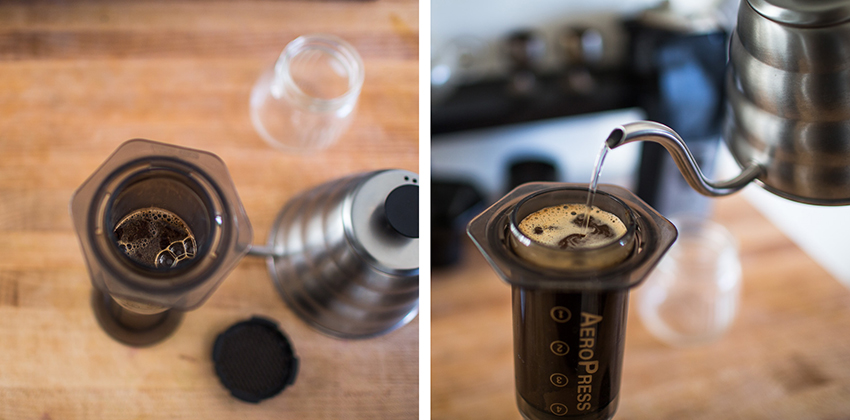
Water temperature: 74 ℃-85 ℃
The official advice is that 74 ℃-80 ℃ water makes the best coffee. In fact, the temperature of hand water can reach 91 ℃-93 ℃ or higher, because of the different extraction methods. The material of the Philharmonic pressure determines that it dissipates heat slowly and loses less temperature, and its extraction method determines that its water temperature does not need to be too high-too high the temperature of immersion extraction is easy to extract, resulting in a bad flavor. Of course, it is too low, and some flavors are not easy to extract.
Therefore, the general recommendation 74 ℃-85 ℃ is OK.
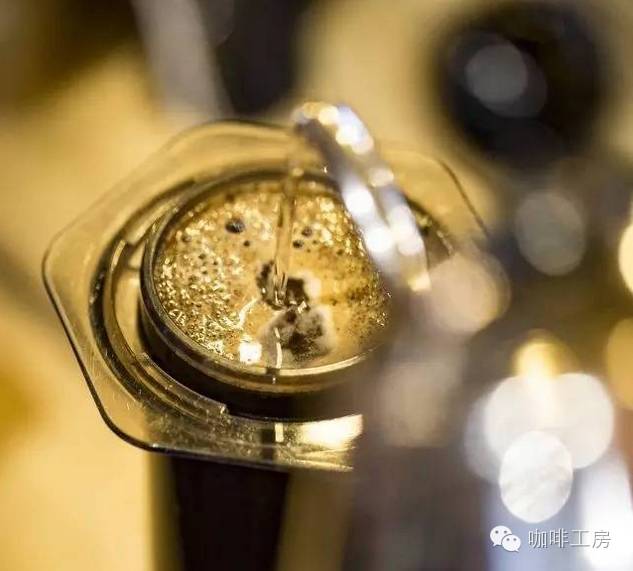
Powder-to-water ratio: 1: 8: 1: 15
Haha, you may say that my powder-to-water ratio is bullshit. in fact, the powder-to-water ratio is the freest and most subjective parameter, according to the flavor characteristics of coffee beans, the degree of baking, personal taste preferences, extraction preferences, the powder-to-water ratio does not have a fixed reference value at all.
If you like it rich, you might as well add less water; if you like light, add more water; or, first extract a little thicker, and then dilute it with water.
Anyway, you can have fun as much as you like.
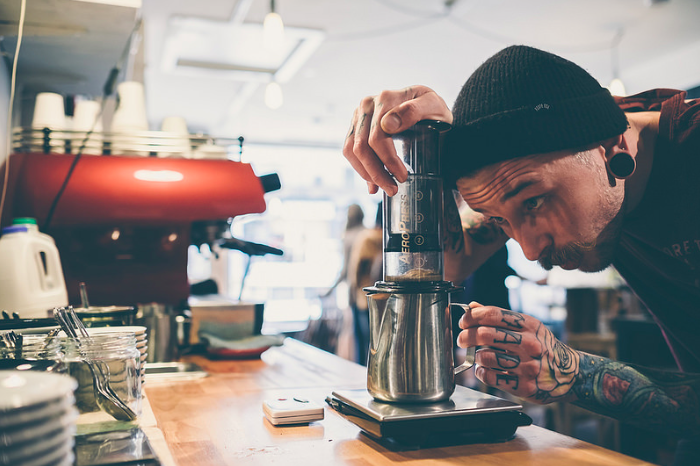
Degree of grinding: very coarse ~ medium fine grinding
In a word, there is no specific coffee beans and brewing methods, and there is no fixed reference value for the degree of grinding at all. It is generally recommended that the grinding of espresso is a little thicker than that of espresso and slightly finer than that of hand-made coffee. This is a very rigid parameter, suitable for many beans and techniques, but not necessarily for you.
If you feel stuck and unhappy when pressing, it means that the coffee powder scale is too fine; on the contrary, it means that the scale is too thick and can be adjusted appropriately.
Extraction time: 1 min ~ 3 min
According to the degree of grinding and water temperature, the finer the grinding, the shorter the extraction time, and vice versa; the higher the water temperature, the shorter the extraction time, and vice versa.

Philharmonic pressure champions all over the world make cooking parameters
In fact, some people may think that I didn't say anything last time, so let's take a look at how the champions of the 2016 Philharmonic Competition cooked it.
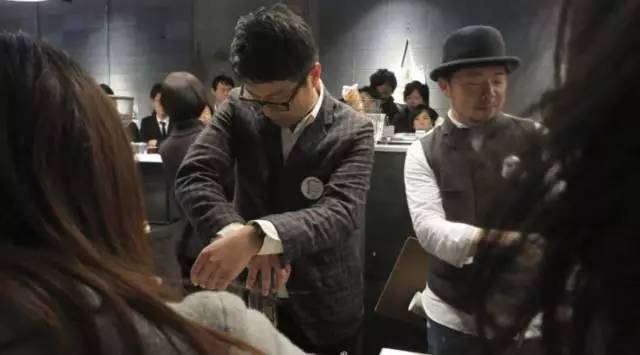
The first Takayuki Miyazaki in the Japanese Philharmonic Championship
Reversal method
The grinding degree of Kalita bean grinder is set to 4.
18 grams of coffee
1. After the coffee is put in, add 50 milliliters of 90 degrees Celsius water
2, stir and soak for 30 seconds
3, add 200ml of water of 70 degrees Celsius
4, press for 40 seconds to complete

The first Dylan in the 2016 Northwest Philharmonic Championship
McClain
Reversal method
Degree of grinding: very rough grinding
30 grams of coffee
Standard filter paper
1. After putting in the coffee, add 120 milliliters of water of 85 degrees Celsius
2, stir for 10 seconds
3, at 0:50 seconds, reverse the Philharmonic pressure
4, press for 20-30 seconds
5, add 120 milliliters of water to the coffee

First place in the French Philharmonic Championship: Jer ô me Dittmar
Adopt standard Philharmonic pressure standard brewing method (positive pressure)
Degree of grinding: medium and rough grinding
18 grams of coffee
Water: 225 ml 80 degrees Celsius
Standard filter paper
1pm 0displacement 00-0:15 add 40ml of water
Wait 30 seconds from 15 to 0:45 on the same day.
3, 0:45-1:45 add 185ml of water
4Perfect 1PUR 45-2:25 Extrusion is done.

First place in Columbia Philharmonic Championship: Sebastian Hernandez
Reversal method
Degree of grinding: medium fine grinding (Ditting bean mill)
20 grams of coffee
Water: 230 ml / 90 degrees Celsius
Standard filter paper
1pm 0displacement 00-0:30 plus 30 ml of cold water of 40 degrees Celsius
Stir, add 200 milliliters of water at 90 degrees Celsius, and screw on the filter paper cover
3Magazine 2 30-3:00 turn around, rotate, slowly squeeze to finish
From TORCH Coffee Yunnan Laboratory

Private house Philharmonic pressure cooking process
1. Prepare utensils, love press, bean grinder, coffee cup, coffee pot.
two。 Coffee Grinding. The important thing is that the coffee is ground to medium particle size for use of quality. By grinding the coffee, this allows for a thicker, more subtle cup or even more extraction.
3. Install Philharmonic pressure. The No. 4 round bottom that contacts the black rubber part in the plunger brewing tube. When operating, the numbers should be reversed.
4. Flush and preheat the filter. Use hot water in the Philharmonic pressure filter cap to pass through the filter to wash away the residual smell of the paper.
5. Put freshly ground coffee powder, recommend 17 grams or a round Philharmonic pressure spoon freshly ground coffee cup.
6. Water injection for the first time. Wait 45 seconds for steaming the water temperature is about 83 ℃, start the timer set to one minute, and pour in 50 ml or 1 / 4 cup of enough water.
7. Stir evenly for three times to make sure there are no dry spots.
8. Complete the stirring, the second water injection, so that the total level is slightly higher than 2 circles. This should be a 50ml or 1 / 4 cup 100ml or about 1 / 2 cup of your total water capacity.
9. Install and tighten the washed filter.
10. When the alarm clock prompts for 60 seconds, gently rotate it at a 45 °angle for 10 seconds and gently stir the coffee.
11. Use stable, mild pressure, allowing 15 to 25 seconds to prevent air leakage.
twelve。 For dilution and enjoyment, the recommended ratio of water to coffee is 1:1.

Cold knowledge about Philharmonic pressure
1. Why is Philharmonic pressure equipped with a stirring rod?
The top handle of the Philharmonic pressure mixing rod can prevent the mixing rod from touching the filter paper and will not scratch the inner wall of the cylinder, affecting the tightness.
2. Why is there no standard tutorial for Philharmonic pressure?
Philadelphia is like another siphon coffee maker (Syphon) invented by Americans. For Americans, French, Germans and other European and American countries, siphon pots are only daily necessities, and coffee brewing is very simple and convenient, while the Japanese upgrade siphon pots from daily necessities to the level of technology and art, using various ways to use siphon pots to extract (Extraction) amazing boutique coffee. It is precisely because of this spirit that Hario is created to make the development of the Japanese coffee industry more professional. Japanese siphon pot product manual does not mention the use of siphon pot to make coffee, only the instructions for the use of the product itself. The Japanese emphasize that a siphon pot can extract a good cup of coffee. But they don't specify how to do it. How?
3. What is the difference between standard filter paper and metal filter mesh?
Using standard filter paper to make Philharmonic pressure, the coffee will have a pure taste, obvious acidity and light taste.
If you use a metal filter, the coffee will have a thicker taste, stronger aroma and lower acidity. The number of screen holes varies from type to type, so it is necessary to consider the selection of metal screen.
Philharmonic pressure upgrade Historical version
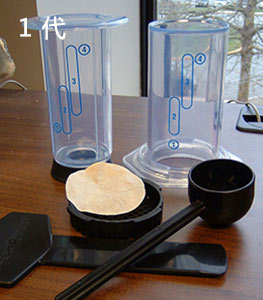

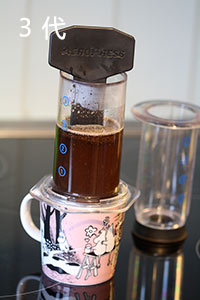
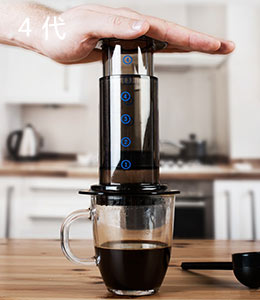
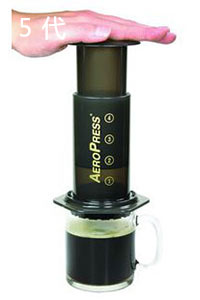
Finally, the cooking demonstration of the 2016 Philharmonic pressure champion is attached.
Hey hey, who is it? I won't say it!
Important Notice :
前街咖啡 FrontStreet Coffee has moved to new addredd:
FrontStreet Coffee Address: 315,Donghua East Road,GuangZhou
Tel:020 38364473
- Prev
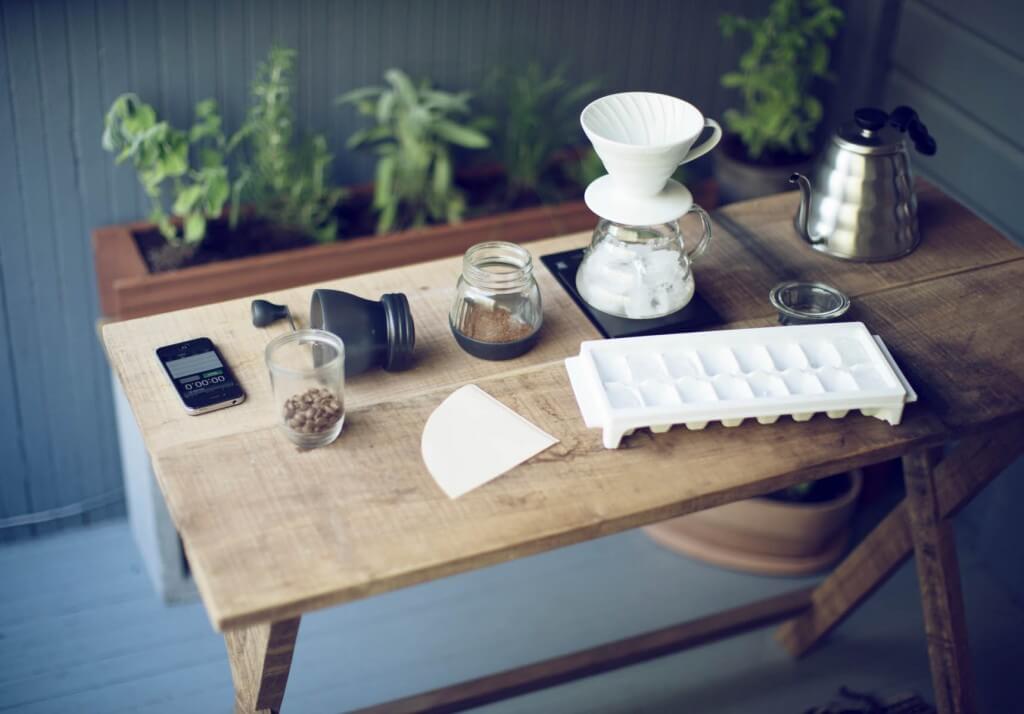
Counter culture coffee (counter-cultural coffee) Japanese hand-made iced coffee tutorial video
Professional baristas please follow the coffee workshop (official Wechat account cafe_style) has just made a pot of siphon, delicious but hot ah hard drink half a pot of the result: the soul is satisfied + wet (sweaty). Let's take a look at Counter culture coffee's Japanese iced coffee to relieve the heat. The equipment needed is the same as hot hand flushing, that is, more ice cubes should be prepared to warm up the usual hands.
- Next
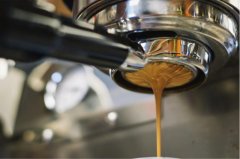
Comparison between Coffee Gold Cup extraction and Chicken Soup
Communication of professional baristas Please follow the coffee workshop (Wechat official account cafe_style) there are guests who order coffee, emphasizing the strong flavor. In the age of instant coffee, if one teaspoon can adjust the standard weight of a cup; to be strong, use two teaspoons. The so-called shade reflects the monotonous taste of coffee in the past, just like a black-and-white TV, which can be adjusted only by light and contrast. Advocate? Cooking worker
Related
- What is the meaning of lactic acid fermentation with coffee bean treatment?
- How to judge the state of foam by sound?
- How does the latte pull out the unicorn pattern? Come to get for a little trick to improve the flower pull!
- Will flower pulling affect the taste of the latte?
- Do you know the history of coffee?
- The difference between honey treatment and sun washing what is raisin honey treatment?
- What kind of milk can a novice use to make coffee foam to keep the foam longer? The correct method and skills of milking tutorial sharing
- Why do washed coffee beans taste sour? Flavor characteristics of washed Coffee
- Introduction to the skill of how to practice the size and height of water injection around the circle of hand-brewed coffee
- How do beginners practice coffee flower drawing from scratch?

